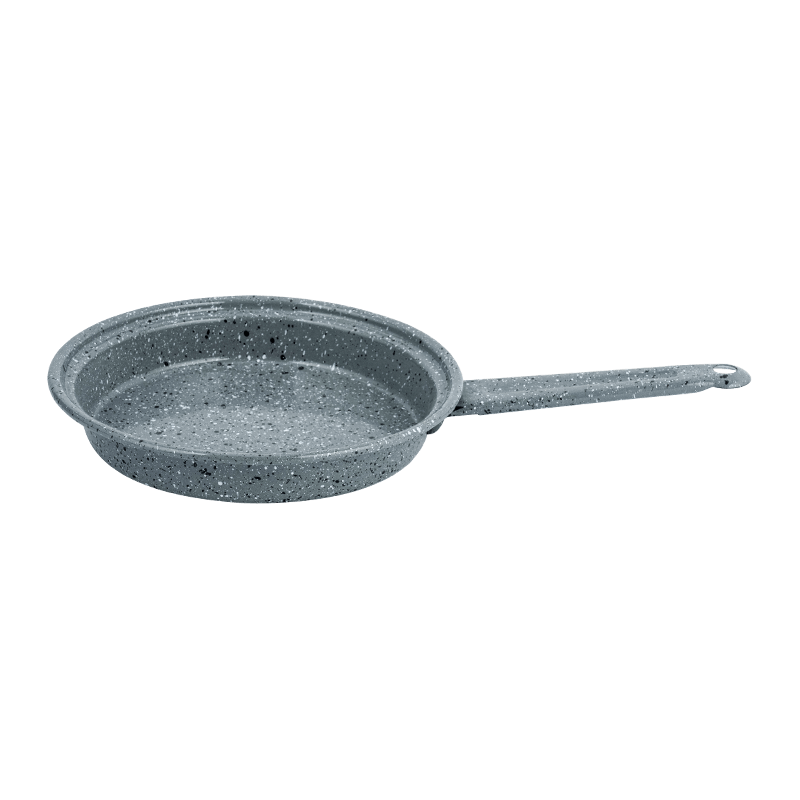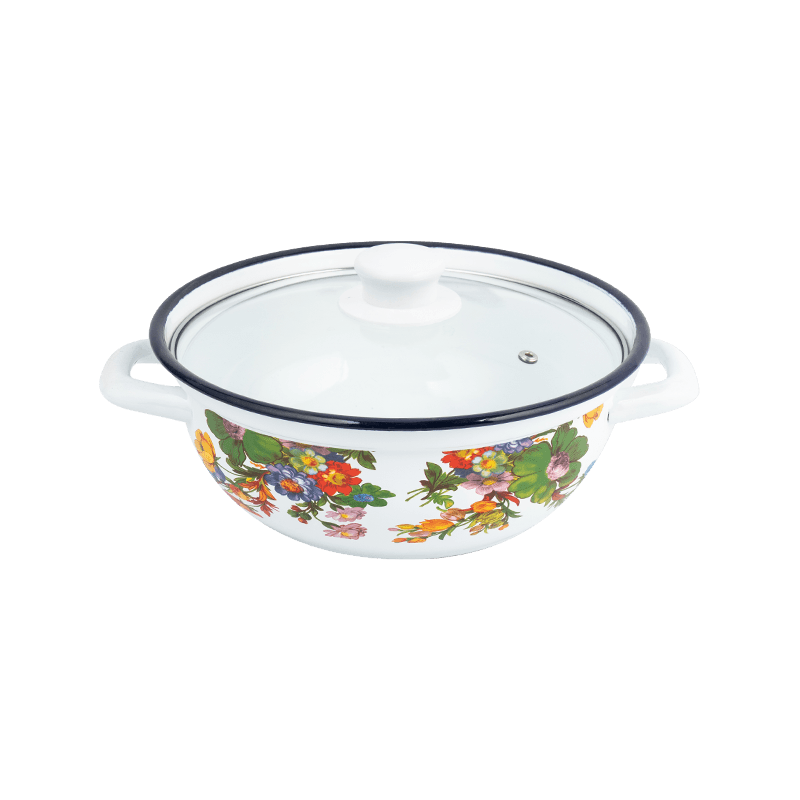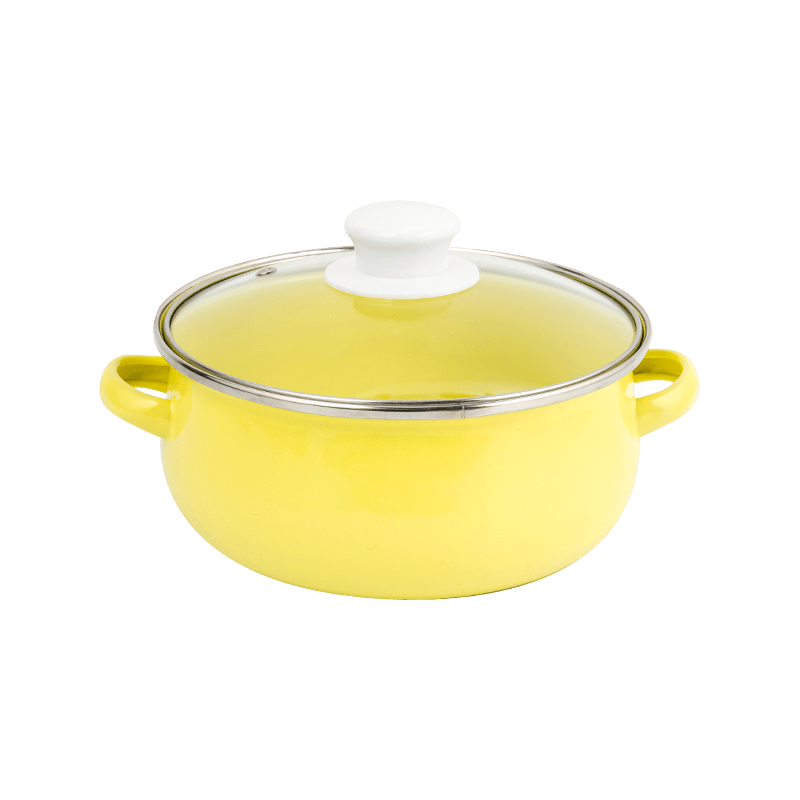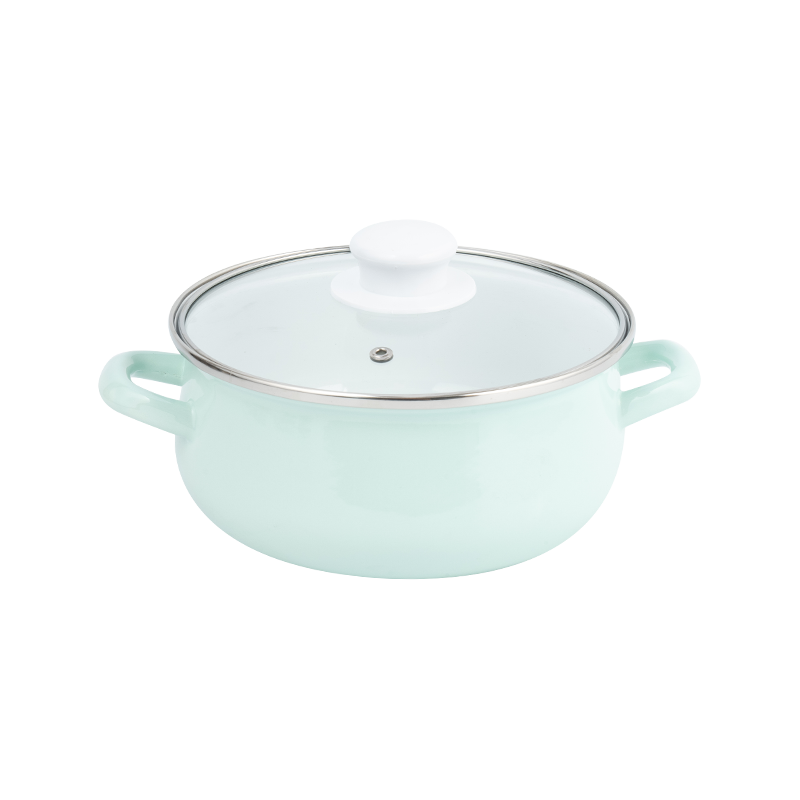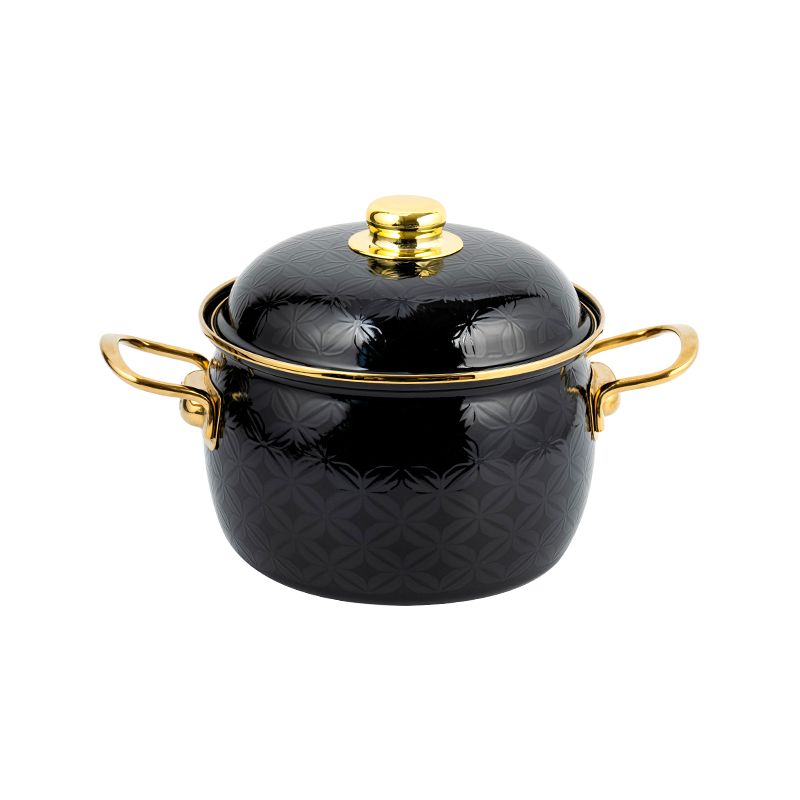1. Basic cleaning steps
Cleaning after cooling: After using the enamel pot, wait for it to cool completely before cleaning. This can avoid damage to the enamel layer due to thermal expansion and contraction.
Soaking in warm water: Soaking the enamel pot in warm water for a period of time can soften food residues and oil stains, making them easier to clean.
Cleaning with a soft sponge or cloth: Use a soft sponge or cloth dipped in warm water and mild detergent for cleaning. Avoid using hard brushes or steel wool and other items to avoid scratching the enamel surface.
2. Cleaning methods for different stains
Food residue: For food residue attached to the enamel pot, use a soft sponge or cloth to gently wipe it off. If the residue is more stubborn, you can soak it for a while before wiping it.
Grease: For enamel pots with heavy oil stains, you can add an appropriate amount of detergent to warm water, soak the pot in it for a while, and then use a soft sponge or cloth to clean it. If the oil stain is still difficult to remove, you can use a small amount of baking soda or white vinegar for auxiliary cleaning.
Burnt marks: If there are burnt marks on the bottom of the enamel pot, you can pour an appropriate amount of hot water, then add a pinch of baking soda or an appropriate amount of white vinegar and let it soak for a while. Then use a soft sponge or cloth to gently wipe the burnt part to remove the marks. But it should be noted that for very serious burnt parts, you may need to use more professional cleaners or seek help from professional maintenance personnel.
3. Daily maintenance and precautions
Avoid empty burning: When using an enamel pot, you should avoid long-term empty burning or high-temperature dry burning to avoid damaging the enamel layer.
Avoid using metal utensils: During cooking, avoid using metal utensils such as knives and spatulas to directly contact the enamel surface to avoid scratching the enamel layer.
Timely cleaning: After using the enamel pot, it should be cleaned in time to avoid food residues and oil stains from adhering to the pot for a long time.
Regular maintenance: In order to maintain the gloss of the enamel pot and extend its service life, regular maintenance can be performed. For example, after cleaning the pot, you can apply a thin layer of cooking oil on its surface to maintain its gloss and lubricity.

 English
English 中文简体
中文简体




